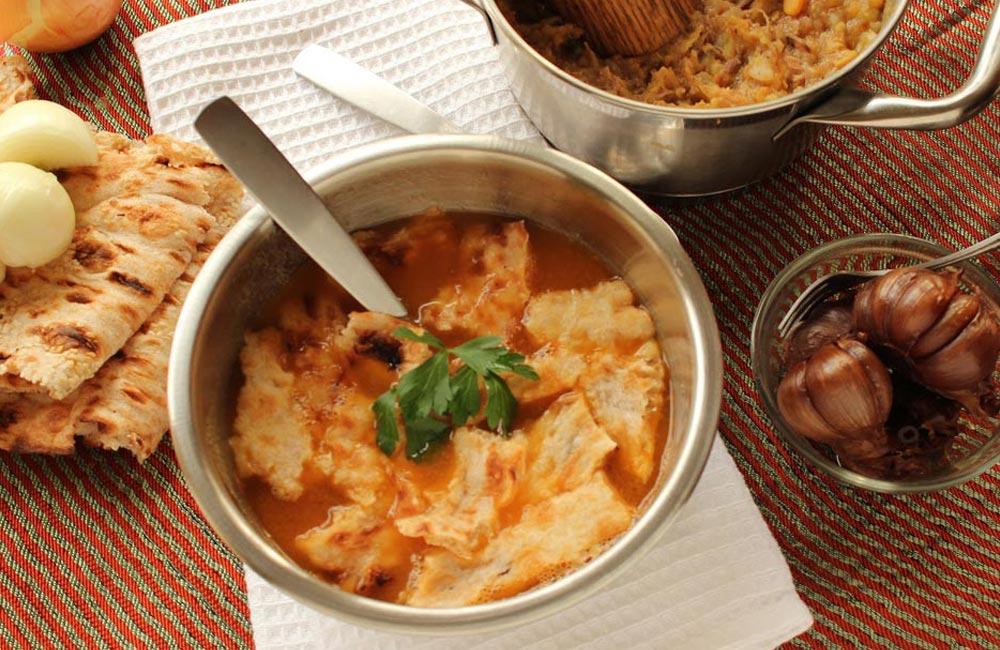IRANIAN TRADITIONAL CUISINE
Much like its ancient history, the foods of the Iranian cuisine have been passed down, added-to, and modified for the past few thousand years. For many travellers, knowing what to expect is going to be on their dinner plate is vital information. Luckily for all visitors, there is a very large variety of different foods in Iran making it an enjoyable ride for any pallet.
There is much Mediterranean influence; such as Roman, Greek, Turkish…etc. in this ancient cuisine. Rice and wheat are staples to Iranian food, as many of the dishes incorporate one or the other. Many of the dishes use a variety fresh herbs and light spices and meat (red meat, poultry or fish). As the Iranian language dialect, clothing and culture differs from each region, the food does too! When travelling across Iran, be prepared to try out each region’s specialties. Iranians love to cook and eat, and so they put a lot of time and effort into their cuisine.
FOOD
Generally, traditional Iranian food is comprised of a large variety that can be roughly grouped into the following types: Chelo-Khoresh; a variety of stews that incorporate a mix of vegetables, herbs and meat that is served with rice. Kebab; skewers of fire roasted meat (marinated and non-marinated) served with rice/bread and roasted tomato. Ash; a thick soup made of a mixture of herbs, legumes, and spices. Some variations of Ash are vegetarian. Polo; rice by itself or mixed with vegetables and/or meat and spices. This rich cuisine also hosts a very large variety of sandwiches, salads, appetizers, deserts and pastries.
Alongside traditional Iranian restaurants and diners, travellers will also find a large variety of international restaurants. In Tehran you will easily be able to find a variety of Chinese, Mexican, Japanese, Turkish, Indian, Lebanese restaurants. Fast food is also very common. Whether it’s Mediterranean baked potatoes, Arabian falafels and samosas, Mexican burritos and enchiladas or fried chicken and cheeseburgers. Iranians love to eat!
From a hygienic standpoint the restaurants and eateries are generally well regulated, clean and trustworthy. However, as with anywhere you choose to eat, whether at home or abroad, take a look around before you food.
BEVERAGES
Since Iran’s tap-water filtration system varies from city to city, it is generally recommended for travellers, outside Tehran, to drink bottled water. The tap water is always safe for washing/bathing, but don’t risk drinking it unless you are assured otherwise. Bottled water is very inexpensive.
Just like the varieties in food, you will find a large variety in drinks as well. Iran is filled with many different fruit juice and shake shops that make fresh drinks on the spot that are both extremely healthy and delicious. In corner store and super markets you will also usually be able to find a variety of packaged juices and unique drinks.
Since 1979, regarding alcohol, it is forbidden by Iranian Islamic law for any person of the Muslim faith to consume, sell, buy, or produce alcohol. Having said that, there is a small minority of Zoroastrian and Christian faith in Iran that are allowed to produce and drink alcohol. However, consuming or carrying alcohol is strictly forbidden for all other patrons, and forbidden to all in public, so in your visit to Iran; don’t bring anything alcoholic beverages with you!
DESERTS
Iranian deserts are truly among the most delicious and exquisite in the world. Very many years of experience and devotion have been put into Iran’s traditional sweets and pastries. When touring Iran, put your diet on hold and try out as many of the traditional deserts as you can. It is very common for people to enjoy these exotic pastries with a cup of tea, coffee or herbal drink. Iran even has its own traditional ice cream made with saffron, pistachios and cream. Just like everything else, these also vary in types and styles from city to city.


